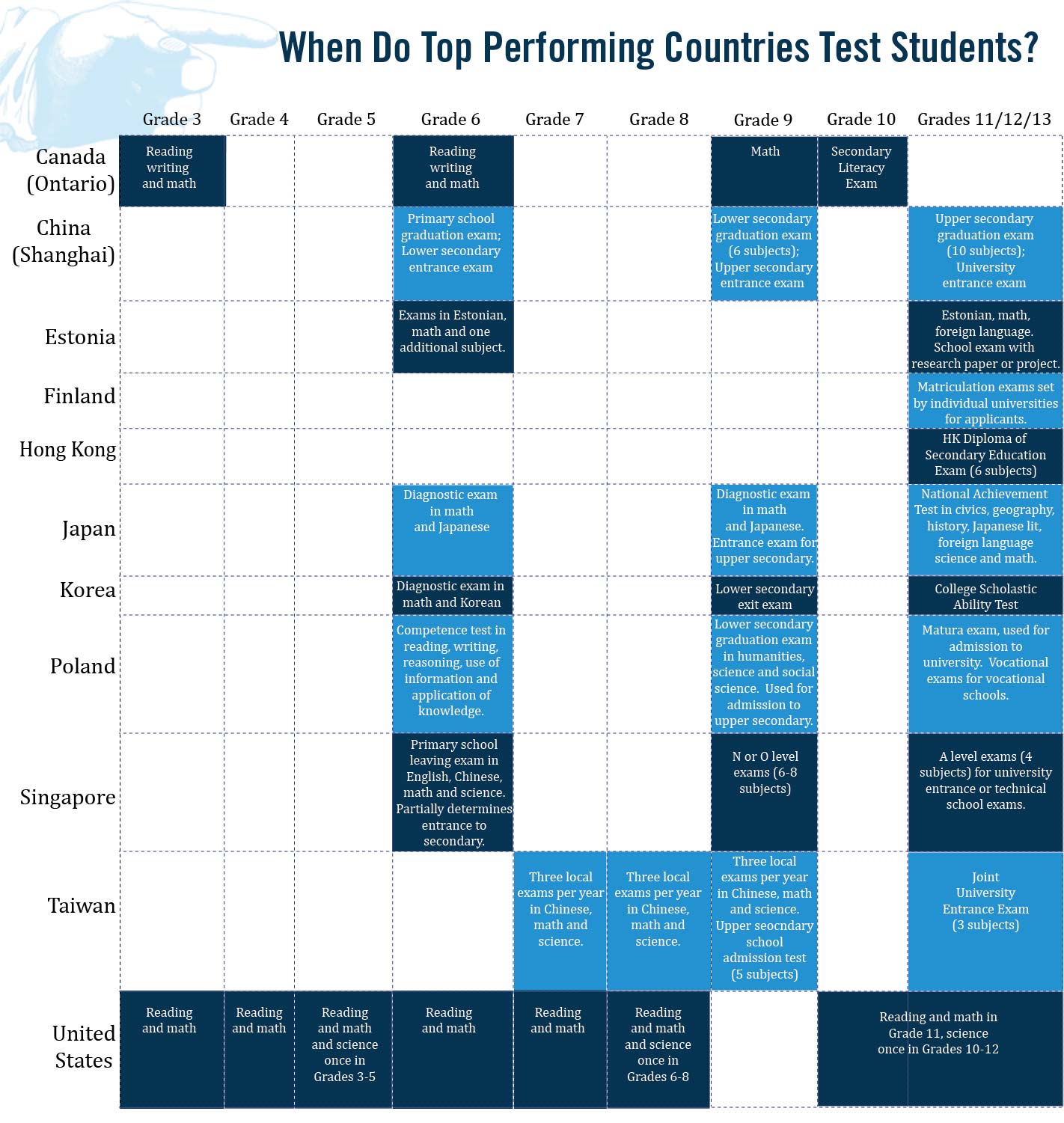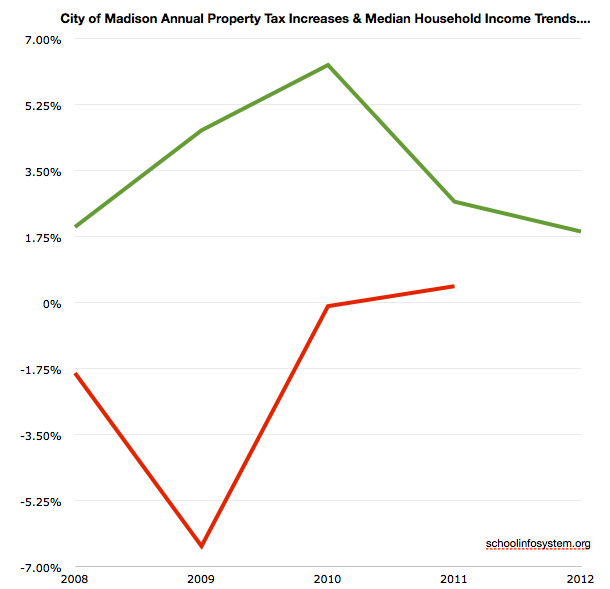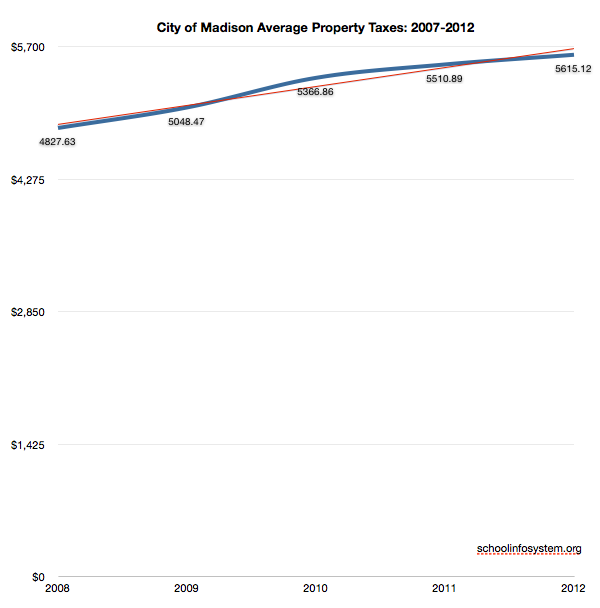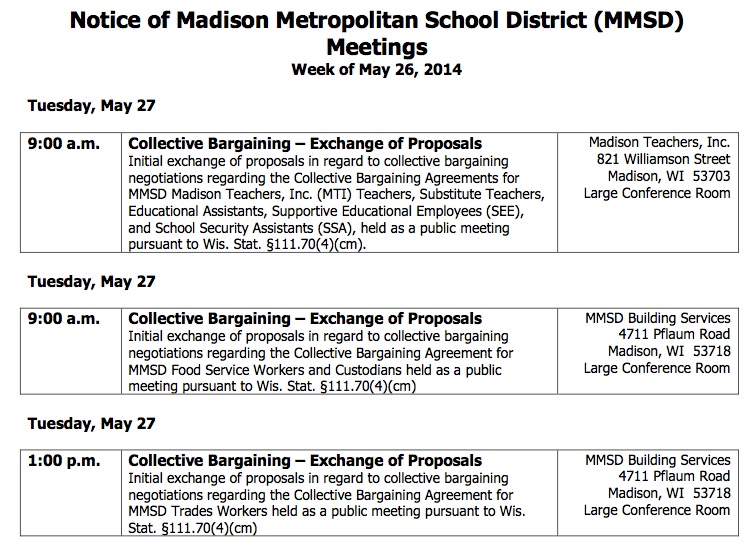David Blaska:
Teachers are some of our most dedicated public servants. Many inspiring educators have changed lives for the better in Madison’s public schools. But their union is a horror.
Madison Teachers Inc. has been a bad corporate citizen for decades. Selfish, arrogant, and bullying, it has fostered an angry, us-versus-them hostility toward parents, taxpayers, and their elected school board.
Instead of a collaborative group of college-educated professionals eager to embrace change and challenge, Madison’s unionized public school teachers comport themselves as exploited Appalachian mine workers stuck in a 1930s time warp. For four decades, their union has been led by well-compensated executive director John A. Matthews, whom Fighting Ed Garvey once described (approvingly!) as a “throwback” to a different time.
From a June 2011 Wisconsin State Journal story:
[Then] School Board member Maya Cole criticized Matthews for harboring an “us against them” mentality at a time when the district needs more cooperation than ever to successfully educate students. “His behavior has become problematic,” Cole said.
For years, Madison’s school board has kowtowed to Matthews and MTI, which — with its dues collected by the taxpayer-financed school district — is the most powerful political force in Dane County. (The county board majority even rehearses at the union’s Willy Street offices.)
Erin Richards & Patrick Marley
Joe Zepecki, Burke’s campaign spokesman, said in an email Wednesday that he couldn’t respond officially because Burke has made clear that her campaign and her duties as a School Board member are to be kept “strictly separate.” However, on the campaign trail, Burke says she opposes Act 10’s limits on collective bargaining but supports requiring public workers to pay more for their benefits, a key aspect of the law.
John Matthews, executive director of Madison Teachers Inc., said the contracts were negotiated legally and called the legal challenge “a waste of money and unnecessary stress on district employees and the community.”
The lawsuit came a day after the national leader of the country’s largest union for public workers labeled Walker its top target this fall.
“We have a score to settle with Scott Walker,” Lee Saunders, the union official, told The Washington Post on Tuesday. Saunders is the president of the American Federation of State, County and Municipal Employees. A spokeswoman for Saunders did not immediately return a call Wednesday.
AFSCME has seen its ranks in Wisconsin whither since Walker approved Act 10. AFSCME and other unions were instrumental in scheduling a 2012 recall election to try to oust Walker, but Walker won that election by a bigger margin than the 2010 race.
“When the union bosses say they ‘have a score to settle with Scott Walker,’ they really mean Wisconsin taxpayers because that’s who Governor Walker is protecting with his reforms,” Walker spokeswoman Alleigh Marré said in a statement.
Molly Beck:
Kenosha School District over teacher contracts after the board approved a contract with its employees.
In Madison, the School District and School Board “are forcing their teachers to abide by — and taxpayers to pay for — an illegal labor contract with terms violating Act 10 based upon unlawful collective bargaining with Madison Teachers, Inc.,” a statement from WILL said.
Blaska, a former member of the Dane County Board who blogs for InBusiness, said in addition to believing the contracts are illegal, he wanted to sue MTI because of its behavior, which he called coercive and bullyish.
“I truly believe that there’s a better model out there if the school board would grab for it,” Blaska said.
MTI executive director John Matthews said it’s not surprising the suit was filed on behalf of Blaska “given his hostile attacks on MTI over the past several years.”
“WILL certainly has the right to challenge the contracts, but I see (it as) such as a waste of money and unnecessary stress on district employees and the community,” said Matthews, adding that negotiating the contracts “was legal.”
In August, the Wisconsin Supreme Court ruled Act 10 constitutional after MTI and others had challenged its legality. At the time, union and district officials said the contracts that were negotiated before the ruling was issued were solid going forward.
Under Act 10, unions are not allowed to bargain over anything but base wage raises, which are limited to the rate of inflation. Act 10 also prohibits union dues from being automatically deducted from members’ paychecks as well as “fair share” payments from employees who do not want to be union members.
Superintendent Jennifer Cheatham said Wednesday the district has not yet received notification of the suit being filed.
“If and when we do, we’ll review with our team and the Board of Education,” she said.
School Board vice president James Howard said the board “felt we were basically in accordance with the law” when the contracts were negotiated and approved.
Molly Beck
A lawsuit targeting the Madison School District and its teachers union is baseless, Madison School Board member and Democratic gubernatorial candidate Mary Burke said Thursday.
The lawsuit filed Wednesday by the conservative nonprofit Wisconsin Institute for Law & Liberty on behalf of well-known blogger David Blaska alleges the school district, School Board and Madison Teachers Inc. are violating Act 10, Republican Gov. Scott Walker’s signature law that limits collective bargaining.
The union has two contracts in effect through June 2016. Burke voted for both of them.
“I don’t think there is a lot of substance to it,” Burke said of the lawsuit. “Certainly the board, when it negotiated and approved (the contracts), it was legal then and our legal counsel says nothing has changed.”
Pat Schneider:
At any rate, Esenberg said, he doesn’t consult with Grebe, Walker or anyone else in deciding what cases to take on.
“The notion that we think Act 10 is a good idea because it frees the schools from the restraints of union contracts and gives individual employees the right to decide whether they want to support the activities of the union — that shouldn’t surprise anyone,” Esenberg said.
WILL is not likely to prevail in court, Marquette University Law School professor Paul Secunda told the Wisconsin State Journal. “They negotiated their current contract when the fate of Act 10 was still up in the air,” said Secunda, who also accused Esenberg of “trying to make political points.”
Esenberg contends the contract always was illegal.
Todd Richmond
The school board, district and union knew they could not negotiate anything more than wage increases based on inflation under the law, the lawsuit alleges. Despite the institute’s warnings, they began negotiations for a new 2014-15 contract in September 2013 and ratified it in October. What’s more, they began negotiating a deal for the 2015-16 school year this past May and ratified it in June, according to the lawsuit.
Both deals go beyond base wage changes to include working conditions, teacher assignments, fringe benefits, tenure and union dues deductions, the lawsuit said.
Taxpayers will be irreparably harmed if the contracts are allowed to stand because they’ll have to pay extra, the lawsuit went on to say. It demands that a Dane County judge invalidate the contracts and issue an injunction blocking them from being enforced.
“The Board and the School District unlawfully spent taxpayer funds in collectively bargaining the (contracts) and will spend substantial addition(al) taxpayer funds in implementing the (contracts),” the lawsuit said. “The (contracts) violate the public policy of Wisconsin.”
2009 Ripon Superintendent Richard Zimman speech to the Madison Rotary Club:
“Beware of legacy practices (most of what we do every day is the maintenance of the status quo), @12:40 minutes into the talk – the very public institutions intended for student learning has become focused instead on adult employment. I say that as an employee. Adult practices and attitudes have become embedded in organizational culture governed by strict regulations and union contracts that dictate most of what occurs inside schools today. Any impetus to change direction or structure is met with swift and stiff resistance. It’s as if we are stuck in a time warp keeping a 19th century school model on life support in an attempt to meet 21st century demands.” Zimman went on to discuss the Wisconsin DPI’s vigorous enforcement of teacher licensing practices and provided some unfortunate math & science teacher examples (including the “impossibility” of meeting the demand for such teachers (about 14 minutes)). He further cited exploding teacher salary, benefit and retiree costs eating instructional dollars (“Similar to GM”; “worry” about the children given this situation).
Related:
“Since 1950, “us schools increased their non-teaching positions by 702%.”; ranks #2 in world on non teacher staff spending!”
Act 10
Madison’s long term reading problems, spending, Mary Burke & Doyle era teacher union friendly arbitration change.
Madison Teachers, Inc.
WEAC (Wisconsin Teacher Union Umbrella): 4 Senators for $1.57M.
John Matthews.
Understanding the current union battles requires a visit to the time machine and the 2002 and the Milwaukee County Pension Scandal. Recall elections, big money, self interest and the Scott Walker’s election in what had long been a Democratic party position.
The 2000-2001 deal granted a 25% pension “bonus” for hundreds of veteran county workers. Another benefit that will be discussed at trial is the controversial “backdrop,” an option to take part of a pension payment as a lump-sum upon retirement.
Testimony should reveal more clues to the mysteries of who pushed both behind the scenes.
So what does it mean to take a “backdrop?”
“Drop” refers to Deferred Retirement Option Program. Employees who stay on after they are eligible to retire can receive both a lump-sum payout and a (somewhat reduced) monthly retirement benefit. Employees, upon leaving, reach “back” to a prior date when they could have retired. They get a lump sum equal to the total of the monthly pension benefits from that date up until their actual quitting date. The concept was not new in 2001, but Milwaukee County’s plan was distinguished because it did not limit the number of years a worker could “drop back.” In fact, retirees are routinely dropping back five years or more, with some reaching back 10 or more years.
That has allowed many workers to get lump-sum payments well into six figures.
Former deputy district attorney Jon Reddin, at age 63, collected the largest to date: $976,000, on top of monthly pension checks of $6,070 each.
And, Jason Stein:
The Newsline article by longtime legal writer Stuart Taylor Jr. alleges that Chisholm may have investigated Walker and his associates because Chisholm was upset at the way in which the governor had repealed most collective bargaining for public employees such as his wife, a union steward.
The prosecutor is quoted as saying that he heard Chisholm say that “he felt that it was his personal duty to stop Walker from treating people like this.”
The Milwaukee Journal Sentinel has requested to speak with the former prosecutor through Taylor and has not yet received an answer.
In a brief interview, Chisholm denied making those comments. In a longer statement, an attorney representing Chisholm lashed out at the article.
“The suggestion that all of those measures were taken in furtherance of John Chisholm’s (or his wife’s) personal agenda is scurrilous, desperate and just plain cheap,” attorney Samuel Leib said.



